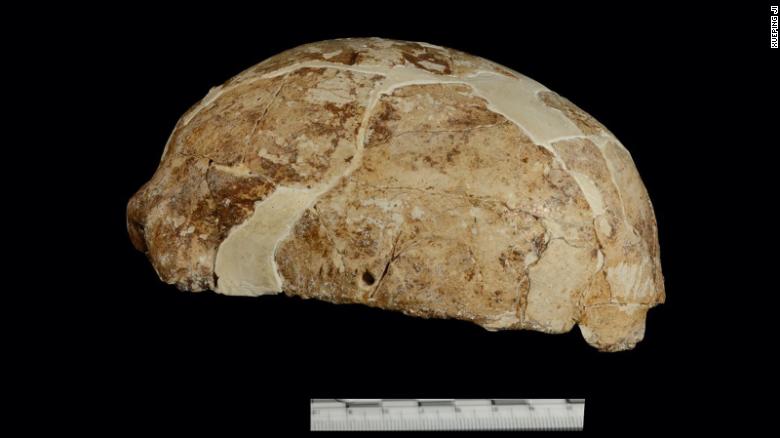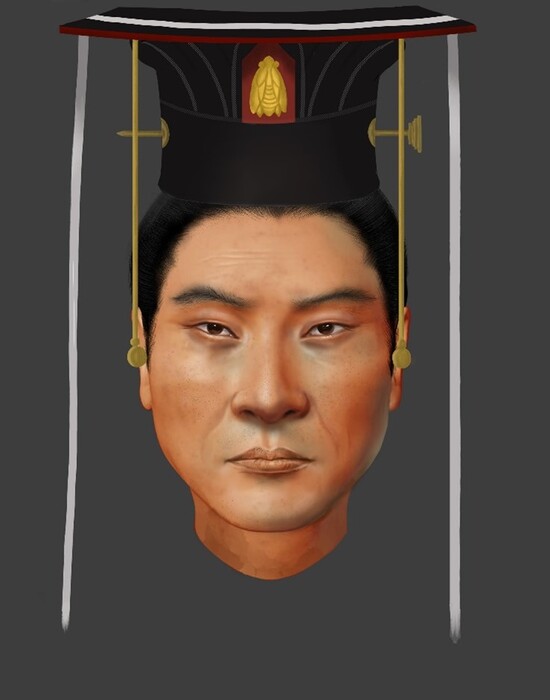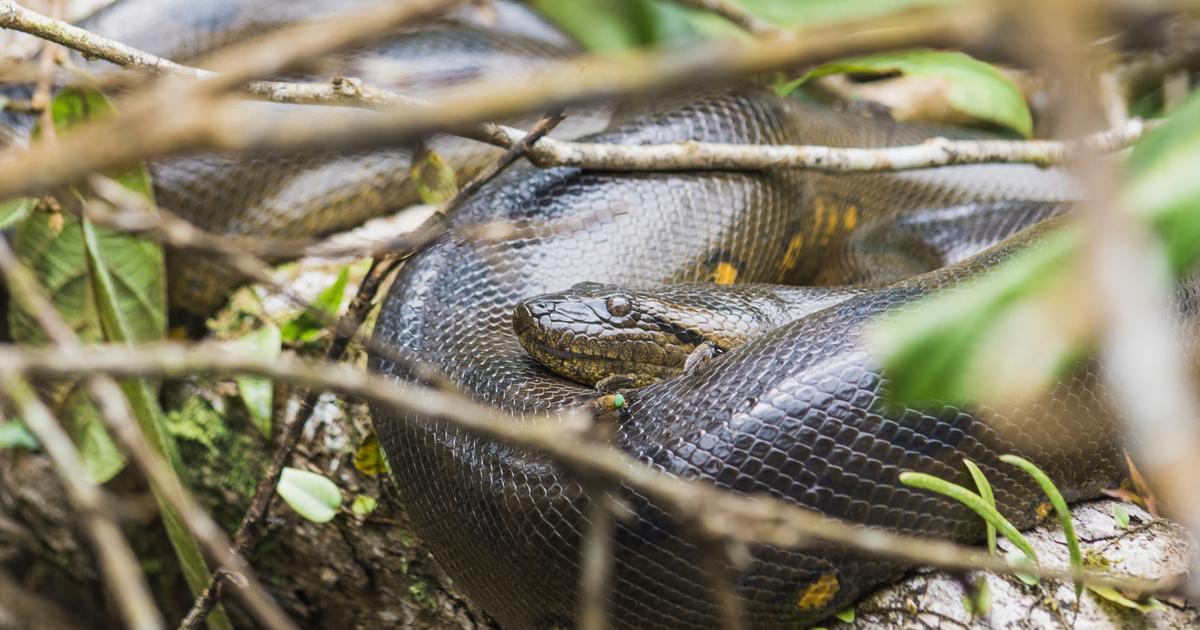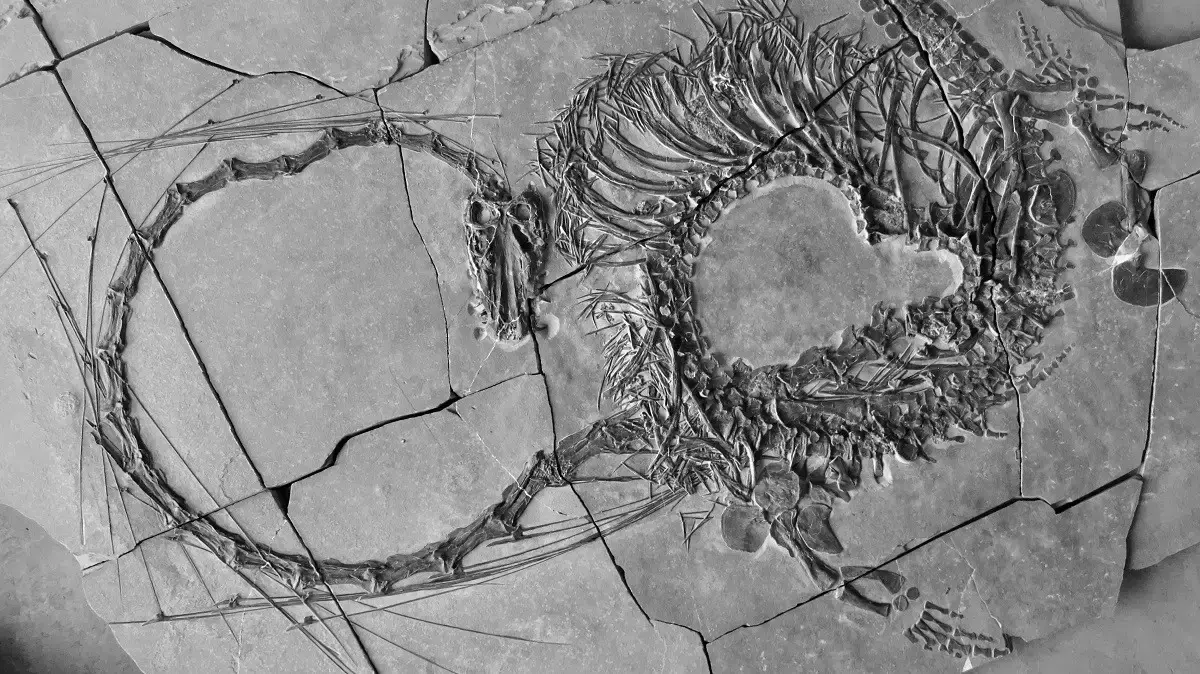Human fossils nearly 4 million years old discovered in South Africa 1:01
(CNN) --
The mystery surrounding human fossils found in a Chinese cave has been solved thanks to DNA sequencing, according to a new study, shedding light on the ancestry of North America's earliest inhabitants.
In 1989, a thigh bone and part of a skull were found in a cave in China's Yunnan province, in the southwestern part of the country.
Radiocarbon dating carried out in 2008 on the sediments where the fossils were found indicated that they were about 14,000 years old, which would mean that they belonged to a period of time in which
Homo sapiens
(the modern human) had migrated to many parts of the world.
The skull and thigh bone were found in the Red Deer Cave in Yunnan, China.
However, the primitive features of the bones unsettled scientists, who wondered which human species the fossils belonged to.
The shape of the skull resembled that of Neanderthals, an archaic human population that disappeared about 40,000 years ago, and the brain seemed to have been smaller than that of modern humans.
Fossil find of five mammoths and Neanderthal tools provides glimpse into life in the Ice Age
Therefore, some experts in human evolution thought that the skull probably belonged to a hybrid population of archaic and modern humans, or perhaps to an unknown human species that existed alongside our own.
The researchers baptized the group with the name Pueblo del Ciervo Rojo or “Red Deer People”, after the name of the cave in which the remains were found.
advertising
Now, Chinese scientists have managed to extract genetic material from the skull and have sequenced its DNA.
Scientists discovered that the skull belonged to a female individual, who was most likely a direct human ancestor, i.e. a
Homo sapiens
, and not a previously unknown type of human.
"The ancient DNA technique is a really powerful tool," Bing Su, a professor at the Kunming Institute of Zoology at the Chinese Academy of Sciences in Yunnan, who participated in the research, said in a news release.
"He tells us fairly definitively that the Red Deer Cave dwellers were modern humans rather than an archaic species such as Neanderthals or Denisovans, despite their unusual morphological features."
Su and his colleagues shared their findings in a study published Thursday in the academic journal Current Biology.
Their analysis of the genome revealed that the individual to whom the bones belonged had levels of Neanderthal and Denisovan ancestry similar to those found in modern humans, suggesting that they were not part of a hybrid population that interbred with each other.
In the image, the skull unearthed in the cave of the Red Deer, in Yunnan, China.
DNA from Denisovans, a poorly understood group of archaic humans, and Neanderthals is still alive in some modern humans.
This is because, long ago, our
Homo sapiens
ancestors encountered these groups as they spread across the globe and bred with them.
The first Native Americans?
The researchers compared the genome extracted from ancient DNA with that of other people around the world, both modern and ancient.
They found that the bones belonged to an individual deeply linked to the East Asian ancestry of Native Americans.
Researchers believe that this group of people traveled north from Siberia and then crossed the Bering Strait to become some of the earliest inhabitants of North America.
The first inhabitants of Great Britain had dark skin
"Its genome fills in a really important missing piece in the overall story of how humans came to the Americas. There's been a lot of work done on the other branch of Native American ancestry, the Siberians, but not much was known until this work about the East Asian ancestors of Native Americans. It's really important to understand this branch as it represents the majority of Native American ancestry," Jennifer Raff, a geneticist and anthropologist at the University of Kansas and author of the book "Origin: A Genetic History of the Americas".
"I find their results plausible and very interesting. We are still trying to figure out the geographic location of the immediately ancestral population of the First Peoples, but this work gives us some additional clues," added Raff, who was not involved in the research.
This is an artist's impression of the Red Deer Cave People, who lived in Yunnan, China, about 14,000 years ago.
hard traits
But what explains the unusual morphological characteristics of the remains?
The researchers described the genome as "low coverage," meaning it doesn't contain enough detail to offer an explanation for why the bones looked different from modern human skeletons.
The acidic soil and hot, humid conditions in which the skull was found meant that scientists were only able to recover 11.3% of the genome.
It was the first time that the DNA of a human fossil found in southern China had been sequenced.
The study noted that the individual to whom the bones belonged exhibited great genetic diversity, indicating that several different lineages of early modern humans must have co-existed in South East Asia during the Late Stone Age.
Perhaps, the study suggested, the region had been a refuge during the height of the Ice Age.
Darren Curnoe, a research associate at the Australian Museum Research Institute in Sydney, recalled that in 2012 he published the first international scientific paper on the fossils, which he described as having "very bumpy anatomy."
"I know these fossils better than anyone. They are anatomically very puzzling, even if they are modern humans, as the DNA suggests," Curnoe, who was not involved in the latest study, said by email.
"How do we reconcile that? Perhaps the anatomical shape of people in the past, over large time scales, had a lot of 'plasticity' and responded to the environment and lifestyle of these early people. This could be something that we have lost since we started farming".
Discovery in a cave in Laos could reveal more about the greatest mystery of human evolution
Analysis of the Red Deer Cave genome could also help build a more complete picture of ancient humans in East and Southeast Asia, an exciting place for paleoanthropologists.
Some of the oldest rock art in the world has been found there and puzzling archaic human remains have been discovered, such as the Flores man in Indonesia, nicknamed the Hobbit, and the "dragon man", in northern China.
Other finds are shedding light on the enigmatic Denisovans.
Next, the Chinese team hopes to find additional support for their findings by sequencing more ancient human DNA from fossils from southern East Asia, especially those that predate the Red Deer cave dwellers.
human DNA genome






/cloudfront-eu-central-1.images.arcpublishing.com/prisa/4RITWNCKAZFB3I3MBXYYKH6YDI.jpg)


